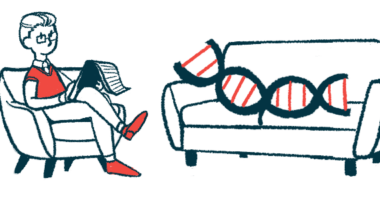TSHA-102 gene therapy fine-tunes MeCP2 levels in Rett mice
Treatment won't harm cells with normal protein levels, study finds

TSHA-102, an experimental gene therapy by Taysha Gene Therapies, can increase the levels of MeCP2 — a protein that’s not found in sufficient amounts or is dysfunctional in people with Rett syndrome — while causing no harm to cells that have normal levels of the protein.
That’s according to new data from a preclinical study in normal (wild-type) mouse pups. The gene therapy had no negative effects on how long they lived, how their brain and behavior worked, or their general health.
This is important because it suggests that the technology used in TSHA-102 can help fine-tune the levels of MeCP2, thereby avoiding a toxic buildup of the protein that could cause unwanted side effects.
“These findings could translate into clinical benefits for treating patients with Rett syndrome,” Sarah Sinnett, PhD, assistant professor at the University of Texas Southwestern Medical Center, said in a press release.
TSHA-102 shows no signs of toxicity in mice
The gene therapy is undergoing testing in REVEAL (NCT05606614), a Phase 1/2 trial that’s recruiting up to 12 women with Rett syndrome at its single center in Canada. The first participant is expected to be dosed soon, and initial safety and other data are anticipated in the second quarter of this year.
Nearly all cases of Rett syndrome are caused by a mutation in MECP2, a gene found on the X chromosome. The MECP2 gene contains instructions for producing MeCP2, a protein that’s needed for normal brain development.
It’s possible that not all cells carry a mutated version of MECP2, but the few that do may be enough to cause symptoms. In female patients, this so-called mosaic pattern can happen due to X chromosome inactivation — when one of the two X chromosome copies is shut down, or silenced.
The idea behind gene therapy for Rett syndrome is to deliver a normal copy of the MECP2 gene into cells, usually using a harmless virus as a carrier or vector. Because some cells may already produce MeCP2, and having too much of the protein can cause problems, it’s important to reach a fine balance of its levels.
These encouraging new preclinical data in wild-type mice indicate that TSHA-102, engineered with our miRARE technology, avoided overexpression [too much] of MeCP2 within cells already expressing MeCP2, while maintaining normal survival, neurobehavioral function and overall health.
Packaged within a virus called AAV9, TSHA-102 combines miniMECP2, a shorter but working version of MECP2, with miRARE, a technology that’s designed to allow the production of MeCP2 to be fine-tuned and avoid an excess of the protein.
In a company-sponsored study, researchers looked at how safe TSHA-102 is in mice and how well it works to ease symptoms mimicking those of Rett syndrome in patients. The team used two types of mice: wild-type mice and mice lacking MeCP2, which they called Mecp2–/Y.
Wild-type mice treated with TSHA-102 showed no signs of toxicity compared with those given a vehicle solution, which does not contain the therapy. There also wasn’t a reduction in survival or overall growth over 36 weeks, or about nine months. Bird scores, which measure symptoms of Rett syndrome, remained unchanged.
“These encouraging new preclinical data in wild-type mice indicate that TSHA-102, engineered with our miRARE technology, avoided overexpression [too much] of MeCP2 within cells already expressing MeCP2, while maintaining normal survival, neurobehavioral function and overall health,” said Sukumar Nagendran, MD, president and head of research and development at Taysha.
In Mecp2–/Y mice, treatment with THSA-102 restored normal growth or even led to growth that was faster than normal.
Survival in mice 4 times longer with THSA-102
Almost half of THSA-102-treated mice (47%) survived the 36-week study. Meanwhile, those animals treated with a placebo lived a median 8.1 weeks. This represents more than four times longer survival, the researchers noted.
The gene therapy candidate also improved Bird scores. Specifically, it delayed the average age of onset for severe clasping from about seven to 21 weeks and that of severely abnormal gait from about eight to 20 weeks.
“THSA-102 regulated expression of MECP2 in both normal and MECP2 deficient cells, which is critical given that Rett syndrome represents such a challenging case for human gene therapy because the therapeutic window for MECP2 transgene [therapeutic gene] expression is narrow,” Nagendran said.
Sinnett, who co-invented the miRARE technology, noted that “TSHA-102 pairs a therapeutic gene with miRARE, all within a single vector genome.”
“We are pleased that miRARE permitted efficacy in Mecp2–/Y mice without compromising safety in wild-type mice,” Sinnett said.
These preclinical data were presented at this year’s American Society of Gene and Cell Therapy (ASGCT) meeting, held May 16-20 in Los Angeles and virtually.
The presentation’s abstract was titled, “A Human-Ready Regulated AAV9/miniMECP2-miRARE Gene Therapy (TSHA-102) Improves Survival, Weight, and Behavior after Intracerebroventricular (ICV) Dosing in the Neonatal Knockout Rett (RTT) Mouse Model.”








